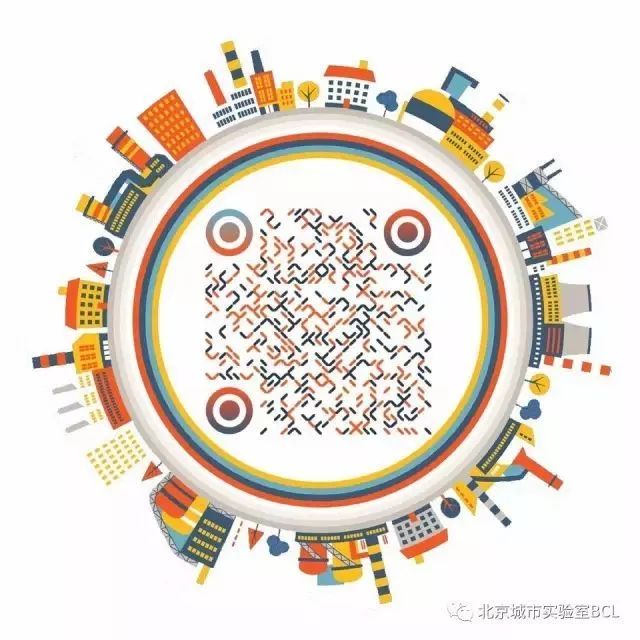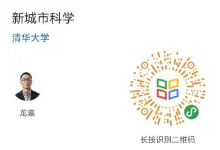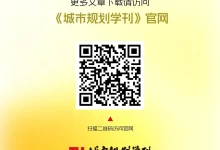Editorial
本期为大家推介的论文是《编者按》(Editorial),发表于期刊《城市数据、科学与技术汇刊》(Transactions in Urban Data, Science, and Technology),由本期刊的五位主编(Ying Long, Jiangping Zhou, Jianghao Wang, Yao Shen, Fan Zhang)共同撰写。在这篇《编者按》中,编者们阐述了该期刊的目标、背景和范围。同时,五位主编代表编委会真诚地欢迎您的咨询、建议与投稿!
Ying Long, Jiangping Zhou, Jianghao Wang, Yao Shen, Fan Zhang
https://journals.sagepub.com/doi/full/10.1177/27541231221091669
https://doi.org/10.1177/27541231221091669
The five editors of Transactions in Urban Data, Science, and Technology are excited to welcome you to this new journal. This journal is an interdisciplinary, international, peer-reviewed journal for the publication of original research on long-standing and emerging urban issues. In this editorial, we’d like to articulate the aims, context, and scope of the journal. With this editorial, we would also like to welcome responses to our call for special issues and submissions that would propel this exciting new venture, which accepts eight types of articles.
《Transactions in Urban Data, Science, and Technology》期刊的五位主编乐于向您推荐这本新期刊。本刊是一份跨学科的国际同行评审期刊,发表关于传统和新兴城市议题的原创性研究。通过本社论,我们旨在阐明本刊的背景、目标和研究范围。我们也希望大家能够提供专刊主题和稿件以推动这个令人激动的新事业。
In recent years, the Fourth Industrial Revolution, which relies on the convergence of computers and communications, is now transforming our cities with a range of disruptive technologies such as artificial intelligence, big data, and the mobile Internet. Then the new science of cities and the science of new cities are emerging and co-evoluting. On the one hand, technologies generate new data and develop new methods and paradigms for urban research, facilitating us to explore the new science of cities, as Michael Batty puts it. However, the development of new science is in its infancy, and we still lack a consensus on the laws of urban system operation and what makes a good city. In recent years, big data or artificial intelligence technologies have achieved huge progress in a short period of time, expanding the scope, scale, and content of urban research, and bringing us new knowledge. Other emerging technologies such as cloud storage, 5G mobile Internet, Internet of Things (IoTs), digital twins, and intelligent construction also enable us to dig deeper into the phenomena and issues in cities. For researchers, cities are more like laboratories.
近年来,融合计算机和通信技术的第四次工业革命正在通过人工智能、大数据和移动互联网等一系列颠覆性技术改变我们的城市。新的城市科学和新城市的科学正在出现并共同演化。一方面,正如迈克尔·巴蒂(Michael Batty)所说:技术产生了新的数据,为城市研究开发了新的方法和范式,有助于我们探索新的城市科学。然而,新的城市科学还处于发展起步阶段,我们对城市体系的运行规律和理想城市的打造方法仍然缺乏共识。近年来,大数据和人工智能技术在短时间内取得了巨大进步,扩大了城市研究的范围、尺度和内容,为我们带来了新的知识。云存储、5G移动互联网、物联网(IoTs)、数字孪生和智能建筑等其他新兴技术的出现也让我们能够深入挖掘城市中的现象和问题。对研究人员来说,城市更像是实验室。
On the other hand, technological progress has affected the growth patterns, human behaviors, and construction technologies, and the city itself has undergone dramatic changes. It is urgent to explore the science of new cities. Online shopping, telecommuting, smart homes, autonomous driving, and other new changes are gradually permeating the daily lives of citizens, and new cities driven by technology are constantly evolving. The way in which a new city manifests itself is a dynamic issue to be tracked. Interestingly, new cities are likely to have different laws than the old ones, so it remains to be seen whether and to what extent the classic urban theory can be applied to new cities. It is in such a dynamic context that Transactions in Urban Data, Science, and Technology is being launched.
另一方面,技术进步影响了城市增长模式、人类行为和建筑技术,新技术的出现使得城市的运行体系出现了巨大的变化,新城市的科学迫切需要探索。网络购物、远程办公、智能家居、自动驾驶等新变化正逐渐渗透到公民的日常生活中,科技驱动的新城市也在不断演变。一座新城市的表现方式是一个需要追踪的动态问题。有趣的是,新城市与旧城市的城市体系可能存在不同的运行规律,因此经典城市理论是否适用、多大程度上适用于新城市,还有待观察。正是在这样一个动态的背景下,《Transactions in Urban Data, Science, and Technology》期刊得以启动。
Against the above backdrop, we summarize three paths that the Fourth Industrial Revolution promotes urban development, aiming to promote urban studies to adapt to the new era.
在上述背景下,我们总结了第四次工业革命促进城市发展的三条路径,旨在推动城市研究适应新时代的发展。
The first path is the city laboratory. It is a method-level path consisting of two perspectives. For one thing, a new data environment composed of open and big data provides urban researchers with a foundation for urban cognition; for another thing, based on new technical tools, urban researchers can collect data based on natural environments and conduct immediate and unremitting observations and studies on cities. The subject of urban studies has been slow to develop in the past, but in recent years, with the gradual development of new data, methods, technologies, and research initiatives, the new science of cities has emerged. The emergence of diverse, massive, and rapidly updated urban data offers broad research prospects for understanding human behaviors at fine spatial and temporal scales, providing us with opportunities to study the interaction between urban space and human behavior. In particular, those high-frequency and time-varying urban data, such as mobile phone signaling data, and location-based service (LBS) data, provide new lenses into urban operations. Under the framework of the new science of cities, new concepts and perspectives in urban studies are emerging, and the spatial and temporal dimensions of urban studies have expanded more than ever before. Urban research outcomes based on data support and quantitative analysis have provided unprecedented opportunities to verify, update, and complement traditional urban theories, and to create and refine the science of new cities.
路径一是城市实验室。这是一条由两个层面组成的方法路径。一方面,开放的大数据组成的新数据环境为城市研究者提供了认知城市的基础;另一方面,城市研究者可以利用新的技术手段,采集自然环境的数据对城市进行及时的和持续性的观察和研究。城市研究这一学科在过去一直发展较为缓慢,但是近年来,随着新数据、新技术和新方法的发展,新的城市科学应运而生。当前不断涌现的多元、海量、快速更新的城市数据为研究精细时空尺度下的人类行为和空间形态提供了广阔的研究前景,也为城市空间与人类行为活动的相互作用机制研究提供了重要机遇。特别是那些高频时变的城市数据,如手机信令数据、基于位置服务(Location-Based Service, LBS)数据等,提供了一种接近真实城市运行频率的高频视角。在新的城市科学的框架下,随着城市研究的新概念和新视角的涌现,城市研究的时空维度也比以往有了更大的拓展。基于数据支持和定量分析的城市研究成果为验证、更新和补充传统的城市理论,以及开创和完善新城市科学提供了前所未有的机会。
The second path is the new city. We use the term “new city” to describe cities that are profoundly influenced by modern and emerging technologies. These impacts on urban life and urban space will gradually change and renew researchers’ perceptions of cities, thereby contributing to the renewal of urban theories. On the one hand, residents’ daily lives have been nested within various digital networks. With the increasing penetration of the Internet, especially the mobile Internet, individuals’ perceptions, experiences, and emotions are digitized, their behaviors are transformed from offline to online and offline integration, and their activities are fragmented in time, diversified, and liberalized in activity modes and locations. For example, the form of offices is more flexible and diverse, including remote offices, home offices, joint offices, and mobile offices, to name a few. The types of online services are also more abundant, such as online shopping, education, entertainment, and take-out service. On the other hand, while urban space typically changes more slowly than urban lifestyle, it will also be subtly influenced by the technological revolution. For example, there is a growing trend toward spatial mixing and fragmentation, such as shared offices and living, due to increased flexibility in the use of space. In addition, technologies such as autonomous vehicles and smart manufacturing that directly affect the scale, organization, and construction law of cities are bound to affect urban space. For example, studies have found that the popularity of autonomous vehicles can significantly reduce overall parking costs and space.
路径二是新城市。我们用“新城市”这个词来描述那些受到现代和新兴技术深刻影响的城市。这些对城市生活和城市空间的影响将逐渐改变研究者们对城市的看法,从而促进城市理论的更新。一方面,居民的日常生活已经被嵌套在各种数字网络中。随着互联网,特别是移动互联网的不断渗透,人们的感知、体验和情感被数字化,人们的行为逐渐从线下转向线上和线下相融合,活动时间碎片化、活动方式和活动地点逐渐碎片化和自由化。例如,人们的办公形式逐渐变得多样化,包括远程办公、家庭办公、联合办公和移动办公等等,不胜枚举。线上服务的类型也更加丰富,有网上购物、教育、外卖和娱乐服务等等。另一方面,虽然城市空间的变化比城市生活方式的变化要慢,但它也会受到技术革命的微妙影响。例如,由于空间使用的灵活性增加,空间使用混合性和碎片化的趋势也愈发明显,如共享工作间等。此外,自动驾驶和智能制造等技术会直接影响城市的规模、组织和建设规律,也会对城市空间产生影响。比如,研究发现,无人车的普及会大大降低城市整体的停车成本和停车空间。
The third path is the future city. This path is for technologies to promote future-oriented planning and design in a practical way. In this path, emerging technologies are applied to planning and design practices as new elements and processes, thereby creating a smart city’s spatial form that meets contemporary needs. As the impact of ICTs on cities proliferates, urban design has also begun to embrace these emerging technologies to enhance spatial perception, feedback, and interaction. Emerging technologies can not only enable the social-level place-making through virtual forms to facilitate the interaction between people and space, but can also be implanted into physical spaces in physical form to enhance the perception of space and human behavior and promote self-feedback space management. In this process, various information about people and space is exchanged through the IoTs in digital twins to monitor the digital operation and management of cities. The planning and design at the physical level and the place-making and public participation at the social level will be integrated with interactive facilities and management platforms at the digital level. In this process, multiple parties will participate in the design, construction, operation, and renewal of future cities. For example, planners provide innovative thinking and specific planning and design solutions to guide the implementation and construction of the design scheme; community managers guide public participation, create a community atmosphere, and provide a platform for multi-agent consultation and discussion; and technology providers can provide interactive facilities and supportive technologies throughout the design and implementation process. Based on the above path, a future-oriented smart city includes not only the digital twin of the real world, but also the interaction and enhancement of the virtual world and real world.
路径三是未来城市。这条路径是让技术以实用的方式来促进面向未来的规划和设计。在这条道路上,新兴技术作为新的元素和流程被应用于设计和规划实践,从而创造出符合当代需求的智能城市空间形态。随着信息通信技术对城市影响的加深,城市设计也开始拥抱这些新兴技术,以加强对空间的感知、反馈和互动。新兴技术不仅可以通过虚拟形式实现社会层面的场所营造,促进人与空间的交互,还可以以物理形式植入物理空间,增强对空间和人的行为的感知,促进自反馈式空间管理。在这个过程中,有关人和空间的各种信息通过物联网在数字孪生中进行交换,以监控城市的数字化运行和管理。物理层面的规划和设计以及社会层面的场所营造和公众参与将与数字层面的互动设施和管理平台相结合。在这个过程中,多方将参与到未来城市的设计、建设、运营和更新的过程中去。例如,规划师提供新思维和独特的规划设计解决方案指导设计方案的实施和建设;社区管理者引导公众参与,营造社区氛围,提供多主体咨询和讨论的平台;技术提供者可以在整个设计和实施过程中提供互动设施和支持性技术。基于上述路径,面向未来的智慧城市不仅包括现实世界的数字孪生,还包括虚拟世界和现实世界的交互与提升。
All of the above three pathways can be observed in Chinese cities, where the level of scientific and technological development is on the rise. China is still a developing country in the transitional process of urbanization, and the Fourth Industrial Revolution will be a major opportunity for China’s national development. As a result, the Chinese government has spared no effort to promote new technologies. China’s Internet giants are gradually emerging, and the construction of smart cities is in full force. Meanwhile, the rise of science and technology has brought new challenges to urban studies.
以上三种路径在科技发展水平正在上升的中国城市中都可以观察到。中国仍是一个正在经历城市化进程的发展中国家,第四次工业革命将是中国发展的一个重大机遇。因此,中国政府正在不遗余力地推广新技术。中国的互联网巨头正在崛起,智慧城市建设也在全面展开。同时,科学技术的兴起也对城市研究带来了新的挑战。
We hope that the journal Transactions in Urban Data, Science, and Technology can quickly contribute scientific value to both the scholarship and practice concerning Chinese cities in the Fourth Industrial Revolution. Until now, there has been a lack of peer-reviewed journals on the new science of cities and the science of new cities, in contrast to the widespread concern about the profound and enormous impact of new technologies on urban science. Transactions in Urban Data, Science, and Technology seeks to publish cutting-edge urban research on new technologies and their impact on cities. It features a flexible and interdisciplinary platform to introduce Chinese cities and Chinese urban studies, for the exchange of ideas and information among researchers, urban planners, policymakers, engineers in technology companies, and readers from different disciplines.
我们希望《Transactions in Urban Data, Science, and Technology》期刊能尽快为研究第四次工业革命背景下中国的城市研究和城市实践贡献科学价值。目前,仍缺乏关于“新的城市科学”和“新城市的科学”的同行评议期刊,这与人们普遍关注新技术对城市科学深刻影响的现实形成对比。《Transactions in Urban Data, Science, and Technology》期刊旨在发表关于新技术对城市影响的前沿城市研究。它为介绍中国城市和中国城市研究提供了一个灵活的跨学科平台,供研究人员、城市规划师、决策者、工程师和不同学科的读者们交流想法和信息。
Transactions in Urban Data, Science, and Technology is open to a wide range of topics. The journal focuses on, but is not limited to, the following topics: smart city/infrastructure and future city driven by disruptive technologies, urban modeling, planning/design support system, big data and related emerging technologies, artificial intelligence, internet of things, wearable devices, applications in urban studies and planning, as well as imperative analytics of new cities shaped by disruptive technologies. Research ranging from architectural to international scale is all welcomed. Transactions in Urban Data, Science, and Technology is committed to topical, theoretical, and methodological diversity. It welcomes contributions from a wide range of disciplines including computer science, anthropology, environmental studies, economics, geography, political science, and sociology. The journal also seeks to enrich existing and emerging interdisciplinary fields. We expect the journal contributes to the understanding of non-China urbanization. More, comparative submissions are also welcomed in order to better understand Chinese cities.
《Transactions in Urban Data, Science, and Technology》期刊涉及的主题非常广泛。本期刊关注但不限于以下主题:智能城市/基础设施、颠覆性技术驱动的未来城市、城市建模、规划/设计支持系统、大数据和相关新兴技术、人工智能、物联网、可穿戴设备、城市研究和规划应用,以及对颠覆性技术塑造新城市的必要分析。本期刊接受小到建筑尺度,大到全球尺度等各种尺度的研究。《Transactions in Urban Data, Science, and Technology》致力于主题、理论和方法的多样性,欢迎来自计算机科学、人类学、环境研究、经济学、地理学、政治学和社会学等广泛学科领域的投稿。本期刊还力图丰富传统和新兴的跨学科领域。我们希望本刊有助于理解中国以外地区的城市化。此外,为了更好地了解中国的城市,欢迎投稿比较分析类的文章。
Transactions in Urban Data, Science, and Technology aims to provide an unlimited academic discussion platform, so we accept a wide variety of articles to publish. Please do not hesitate to submit your articles in the following types:
《Transactions in Urban Data, Science, and Technology》期刊旨在提供一个自由的学术交流平台,所以我们接受多种类型的文章发表。如果您的文章符合以下类型,请不必犹豫,尽管提交:
Research article: Advances existing knowledge and debates significantly through theoretical elaboration or empirical analysis. May contain up to 8,000 words (text only, excluding references, tables, and figures, but including table/figure titles and legends) in addition to a title (max. 30 words) and an abstract (max. 200 words). Links to the datasets are encouraged to be submitted together with the article.
研究论文:通过理论阐述或实证分析,显著提升现有知识和争论。除标题(最多30个单词)、摘要(最多200个单词)外,最多可包含8000个单词(仅限文本,不包括参考文献、表格和图表,但包括表格/图表标题和图例)。我们鼓励将数据集的链接与文章一起提交。
Review article: Summarizes existing knowledge, identifies key insights, and controversies and outlines directions for future research and/or practice. May contain up to 10,000 words (text only, excluding references) in addition to a title (max. 30 words) and an abstract (max. 200 words).
综述论文:总结现有知识,确定关键见解和争论,并概述未来研究和/或实践的方向。除标题(最多30个单词)和摘要(最多200个单词)外,最多可包含10000个单词(仅限文本,不包括参考文献)。
Perspective article: Stimulates discussion by providing fresh, out-of-the-box, and forward-looking perspectives on existing debates and topics. May contain up to 3,000 words (text only, excluding references) in addition to a title (max. 30 words) and an abstract (max. 100 words). Perspective articles are commissioned by the editors, but suggestions are welcome.
观点论文:通过对现有的辩论和话题提供全新的、开箱即用的、前瞻性的视角,激发讨论。除标题(最多30个单词)和摘要(最多100个单词)外,最多可包含3000个单词(仅限文本,不包括参考文献)。观点论文由编辑委托撰写,但欢迎提出建议。
Note from the field: Written by policymakers or practitioners to highlight needs for further knowledge generation and/or to share lessons learned from practice. May contain up to 3,000 words (text only, excluding references) in addition to a title (max. 30 words) and an abstract (max. 100 words).
现场笔记:由决策者或从业者撰写,以强调进一步生成知识的需要和/或分享实践中的经验教训。除标题(最多30个单词)和摘要(最多100个单词)外,最多可包含3000个单词(仅限文本,不包括参考文献)。
Comment: Puts an article published in Transactions in Urban Data, Science, and Technology in the previous six months into perspective, either by highlighting its relevance or pointing out its shortcomings. May contain up to 500 words in addition to a title (max. 30 words) and no more than 12 references.
评论:通过强调文章的相关性或指出文章的不足,对过去六个月发表在本期刊上的文章进行透视。除标题(最多30个单词)和最多12篇参考文献外,最多可包含500个单词。
Data descriptor: Describes all kinds of urban datasets in detail. The description should include the methods used to collect the data and sufficient technical analyses to support the quality. May contain up to 6,000 words (text only, excluding references, tables, and figures, but including table/figure titles and legends) in addition to a title (max. 30 words) and an abstract (max. 200 words). Links to the datasets are required to be submitted together with the article.
数据描述:详细描述各种城市数据集,描述应包括收集数据的方法和支持质量的充分技术分析。除标题(最多30个单词)和摘要(最多200个单词)外,最多可包含6000个单词(仅限文本,不包括参考文献、表格和图表,但包括表格/图表标题和图例)。数据集的链接需要与文章一起提交。
Data visualization: Visualizes and describes all kinds of urban data. The description should include data collection methods, visualization methods, and discoveries. May contain up to 4,000 words (text only, excluding references, tables, and figures, but including table/figure titles and legends) with one or two high-resolution images in addition to a title (max. 30 words) and an abstract (max. 200 words). Links to the visualizations are required to be submitted together with the article.
数据可视化:可视化和描述各种城市数据,描述应包括数据收集方法、可视化方法和发现。除标题(最多30个单词)和摘要(最多200个单词)外,最多可包含4000个单词(仅限文本,不包括参考文献、表格和图表,但包括表格/图表标题和图例),以及一个或两个高分辨率图像。可视化的链接需要与文章一起提交。
Practical case: Covers a brief description of how a city is influenced by disruptive technologies; an account of contemporary conditions, problems, or issues; and a critical review of the current policy, planning, or management responses. May contain up to 3,000 words (text only, excluding references) in addition to a title (max. 30 words) and an abstract (max. 100 words).
实践案例:简要描述城市如何受到颠覆技术的影响;对当代条件、问题或议题的描述;以及对当前政策、规划或管理回应的批判性审查。除标题(最多30个单词)和摘要(最多100个单词)外,最多可包含3000个单词(仅限文本,不包括参考文献)。
Transactions in Urban Data, Science, and Technology will feature one special issue per year on an extraordinarily timely and important topic. The special issue might be commissioned to guest editors. We welcome proposals from prospective guest editors who wish to submit a call for papers and a supporting case for consideration by the editors of Transactions in Urban Data, Science, and Technology. Materials can be sent to the most appropriate chief/associate editor depending on the topic. All topics should focus on the Chinese context. Guest editors will typically be responsible for sending papers out for review, reaching initial editorial decisions (the journal editors will have the final say on all the decisions), and ensuring timely submission of the whole set of special issues for section papers.
《Transactions in Urban Data, Science, and Technology》期刊将每年围绕一个非常热点和重要的问题设置专刊。专刊可能会被委托给客座编辑。我们希望提交论文征集和支持性案例的潜在客座主编们提出建议供《Transactions in Urban Data, Science, and Technology》的主编们考虑。所有议题都应聚焦于中国,可以根据主题将材料发送给合适的主编/副主编。客座主编负责将论文送审,达成初步的编辑决策(期刊编辑对所有决定有最终决定权),并确保能够及时提交整套专刊的栏目论文。
To summarize, Transactions in Urban Data, Science, and Technology aspires to be a pioneering journal for readers across the multi-disciplines. Its innovation is three-fold. First, Transactions in Urban Data, Science, and Technology focuses on the emerging topic of how disruptive technologies shape the new science of cities and the science of new cities in the context of the Fourth Industrial Revolution. Second, this journal focuses on introducing Chinese cities from an international perspective, while others widely accept studies of cities around the world. Thirdly, Transactions in Urban Data, Science, and Technology is more flexible in article forms, allowing the new science of cities and the science of new cities to be presented and synergized across multiple dimensions here.
总而言之,《Transactions in Urban Data, Science, and Technology》期刊希望成为一个面向拥有多学科背景的读者们的先驱期刊。本刊的创新点有三方面。首先,本刊聚焦于颠覆性技术是如何在第四次工业革命背景下塑造“新城市的科学”和“新的城市科学”这一新兴话题。第二,本刊注重从国际视角介绍中国城市,而其他期刊则广泛地接收来自世界各地的城市研究。第三,本刊的文章在形式上更为灵活,使“新城市的科学”和“新的城市科学”在多个维度上被呈现和协同。
We hereby express our warmest gratitude to our publisher SAGE, for being receptive to the idea of this journal. We welcome the immediate submission of papers, as well as proposals for special issues. Together, let’s meet the challenge of the Fourth Industrial Revolution and make it benefit cities and people.
我们在此对SAGE出版社表示最诚挚的感谢,感谢接受本期刊的想法。我们欢迎您立即提交稿件和对专刊的建议。让我们一起迎接第四次工业革命的挑战,使其造福城市和人民!
Ying Long
School of Architecture,
Tsinghua University
Jiangping Zhou
Faculty of Architecture,
The University of Hong Kong
Jianghao Wang
Institute of Geographic Sciences & Natural Resources Research,
Chinese Academy of Sciences.
Yao Shen
College of Architecture and Urban Planning,
Tongji University
Fan Zhang
Senseable City Lab,
Massachusetts Institute of Technology
更多期刊资讯,请点击文末“阅读原文”,或复制【期刊主页链接】至浏览器搜索查看。欢迎来自所有国家和背景的作者投稿!
【期刊主页链接】:
https://us.sagepub.com/en-us/nam/transactions-in-urban-data-science-and-technology/journal203731

更多内容,请点击微信下方菜单即可查询。
请搜索微信号“Beijingcitylab”关注。

Email:BeijingCityLab@gmail.com
Emaillist: BCL@freelist.org
新浪微博:北京城市实验室BCL
微信号:beijingcitylab
网址: http://www.beijingcitylab.com
责任编辑:谭起云、李文越、孟庆祥
原文始发于微信公众号(北京城市实验室BCL):论文推荐 | 城市数据、科学与技术(编者按) Urban Data, Science, and Technology
 规划问道
规划问道









